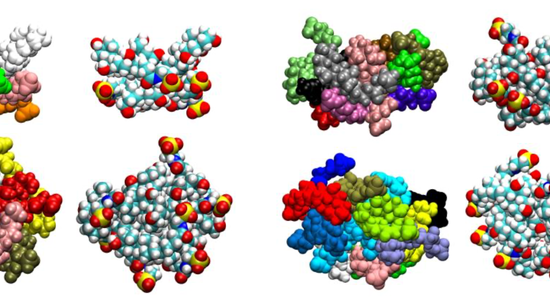Morphology of bile salts micelles and mixed micelles with lipolysis products, from scattering techniques and atomistic simulations

Bile salts (BS) are biosurfactants released into the small intestine, which play key and contrasting roles in lipid digestion: they adsorb at interfaces and promote the adsorption of digestive enzymes onto fat droplets, while they also remove lipolysis products from that interface, solubilising them into mixed micelles. Small architectural variations in their chemical structure, specifically their bile acid moiety, are hypothesised to underlie these conflicting functionalities, which should be reflected in different aggregation and solubilisation behaviour.In a recent King’s College London collaboration, the Dreiss group in the Institute of Pharmaceutical Science and the Lorenz group in the Department of Physics provided a fundamental, multi-scale understanding of the mechanism of self-assembly of two structurally distinct BS, sodium taurocholate and sodium taurodeoxycholate, and the micellar structure they form with lipolysis products found in the gut – which are, to date, still a topic of controversy. Such knowledge is crucial to unlock the processes involved in lipid digestion and, ultimately, develop therapeutic strategies to address the issue of excessive lipid uptake and associated cardiometabolic disorders.
https://www.sciencedirect.com/science/article/abs/pii/S0021979720314417?via%3Dihub
